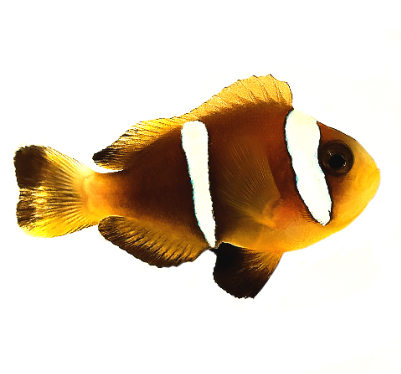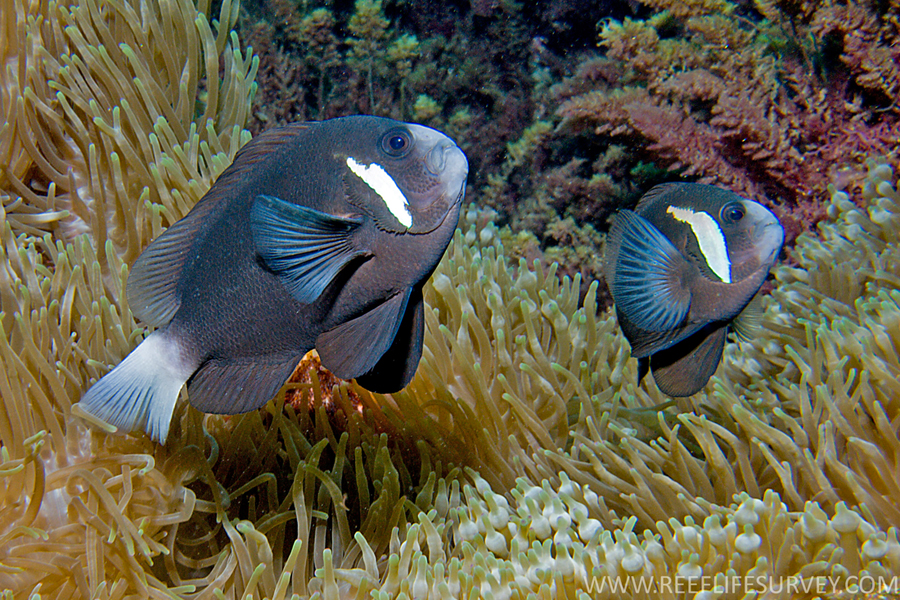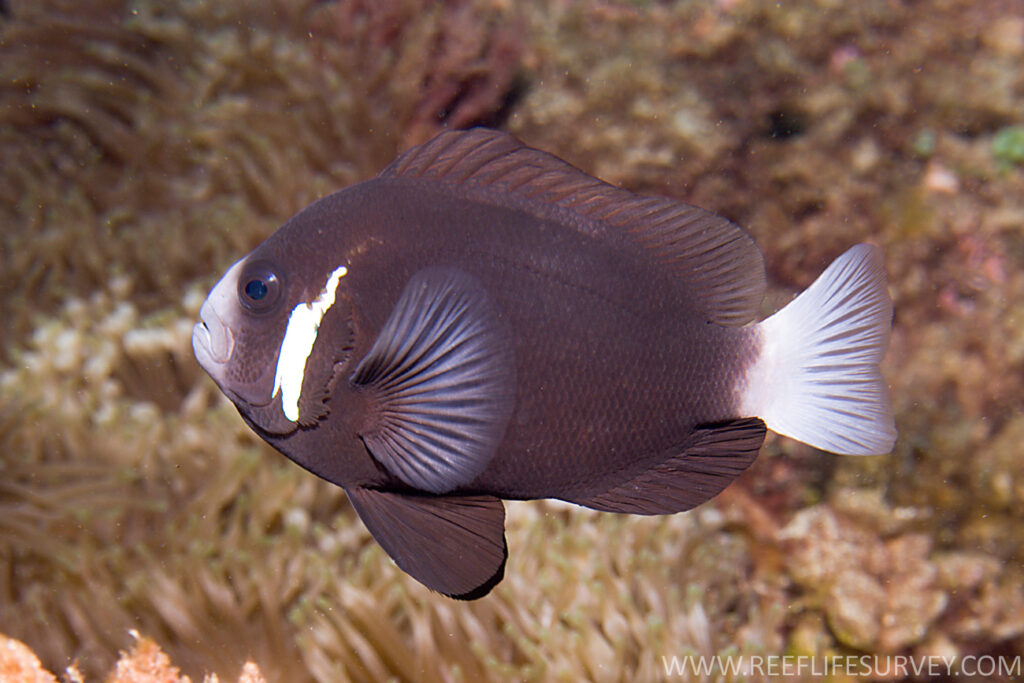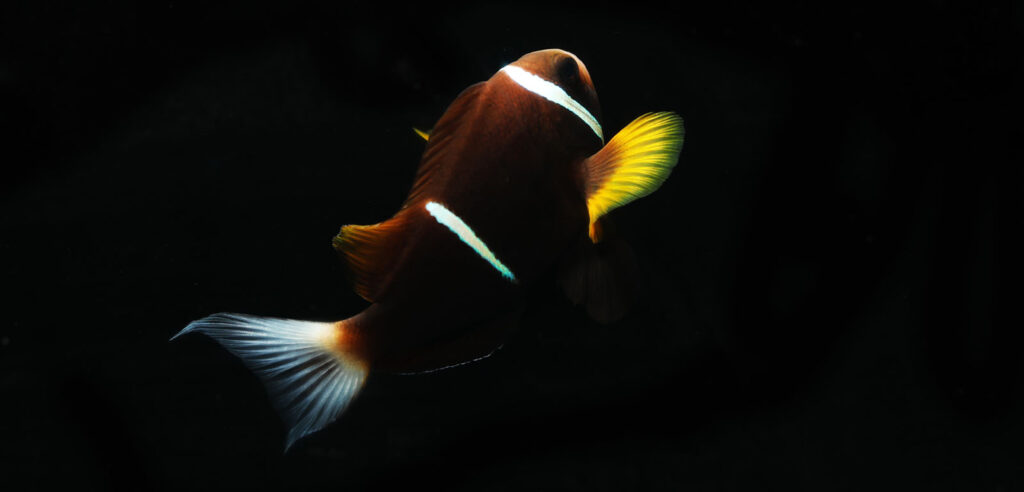
For decades, the Oman Clownfish (Amphiprion omanensis) has been part of an exclusive clownfish species group—the unobtainables (aka. “Amphiprion unobtainiatum“, per Quality Marine’s Kevin Kohen). The biogeography of these species puts them squarely into the category of fishes that are not necessarily only off limits simply because they inhabit remote locations, but moreso they may be inaccessible for political or legal reasons. The Internet rumor long went that the Oman Clownfish was squarely off-limits, to paraphrase, because “how dare anyone touch the Sultanate’s animals!” To put it more directly; it was likely impossible to legally collect and export aquarium fishes in the waters of Oman.
That changed, at least for a short time in 2022, and the result was a trickle of rarely-seen and formerly off-limits endemic species that made it into the aquarium trade. Among them were the first Amphiprion omanensis. Prior to that time, there was a rumored fish or two that had supposedly hit the trade at ridiculously high prices. Still, the provenance of the individual fish was questionable at best. Some proposed that these were waifs…individual specimens of the coveted Oman Clownfish that had made their way outside of protected waters, and were caught by keen-eyed fish collectors. Others proposed that the fish had been smuggled. At least one of these fish may have even been nothing more than a con; a similar-looking specimen of the related Blue Stripe Clownfish (A. chrysopterus) being passed off as something it wasn’t.
But now, we know that the true species has landed, and the future of the species in our aquariums could be different.
As I’ve written before, one of the great benefits of marine ornamental aquaculture is the ability to make rare or unobtainable species readily available to the aquarium trade. A perfect demonstration of this reality can be found in two distinct clownfish examples. On the one extreme Darwin’s “Black Ocellaris” is no longer collected from the wild. There are still some lines of unhybridized Black Ocellarish clownfish in the aquarium trade, because the breeders who work with these lines understand the value in them and know that hybridization can’t be undone. On the other extreme, the single permitted collection of Mcculloch’s Clownfish (Amphiprion mccullochi) from Lord Howe Island is how this species ever made it into the aquarium hobby, and it is now available solely through ongoing captive-breeding efforts. This means that if you value the diversity of species in the aquarium hobby, maybe decide to buy some Mccullochi Clownfish to support their continued propagation (mind you, they’re one of the more aggressive species…plan accordingly).


It’s ironic, at least to me, that the Mccullochi Clownfish shares the same basic color scheme as a “Domino” Black Ocellaris, yet most aquarists would probably pick the man-made selectively-bred version over a species that shares the same basic color scheme while being very rare and having a tremendous back story.
Aquaculture of the Oman Clownfish
While the Oman Clownfish is not part of the endless diversity of “saltwater guppies”—the designer clownfish mutt blends of Amphiprion ocellaris and A. percula that now dominate aquarium offerings—species like the Oman Clownfish have a natural charm that ought to be more deeply appreciated.
The continued presence of the Oman Clownfish in the aquarium hobby will only be ensured by voting with our wallets. The opportunity to own this formerly unobtainable fish should be reason enough to choose it instead of the vastly over-available designer clownfish options (and I write that knowing full well that every Lightning Maroon clownfish in the trade can trace its origins back to my own basement!).
DeJong Marine Life Nursery was the first aquaculture facility to obtain and breed the Oman Clownfish, claiming one of the few “species firsts” left in the world of clownfishes. We shared that story back in the summer of 2023, and I encourage you to read it! Getting captive-bred fishes from Europe to the U.S. is not exactly a routine thing, and likely carries considerable financial investment.
Now, Florida-based Oceans Reefs and Aquariums (ORA) has released the Oman Clownfish in the U.S. Here’s what ORA has to say about their latest debut:
“A breathtaking newcomer to ORA has officially splashed onto the scene! Until very recently, the Oman Clownfish was previously unseen outside its natural habitat in Oman’s isolated reefs. This impossibly rare species is now available captive-bred for aquarists worldwide! Easy to maintain, these extraordinary specimens offer a unique opportunity to bring an aquatic gem into your home aquarium. With its warm, golden-brown coloration and contrasting black lower fins, the most distinctive feature of this dream species is definitely its large, dramatic forked tail. Similar to the Red Sea Two Band, this species also has bold, white stripes and reaches sizes up to 5”. Hardy and easy to keep.”
Indeed, the Oman Clownfish is a thing of beauty, and choosing to keep this species will certainly send a message of having refined tastes if nothing else (if all the designer clownfish these days are the equivalent of soda pop and wine coolers, then clownfish like the Oman or Mcc would be like a refined rare red wine or a multi-decade single malt scotch)! The Oman Clownfish is well-known for its ability to develop a beautiful white lyretail with trailing fin extensions, as shown in some of the Oman Clownfish photos on Fishbase. In addition, the mature Oman Clownfish sports black ventral and anal fins, a reddish-rose-brown base coloration that can turn quite dark, and a striking high-contrast pair of vertical bars. Throw in the bright yellow pectoral fins for another judicious splash of color. Reaching a mature size over up to 5.5 inches (14 cm), a pair of Oman Clowns would make a unique showpiece in a suitably sized reef aquarium as they mature.

The first offerings of ORA’s Oman Clownfish are being made through SaltwaterAquariums.com, and come with a $699.99 retail price. I suspect any retailer who carries fish and coral from ORA can get you these fish. Yes, the asking price might be out of some readers’ budgets at this time. However, remember that the first captive-bred Mccullochi Clownfish sold for over $3000 some 15-20 years ago; now you can get a Mccullochi Clownfish for just $119.99.
My advice? If you want your next reef tank to stand apart, consider one of the many unique wild species and color forms for your aquarium, rather than some saltwater guppies. Everyone has seen a Picasso Percula or Black Storm Clownfish, but whether you go as affordable as a $24.99 Pink Skunk Clownfish (A. perideriaon) or choose one of the truly rare captive-bred offerings like the Mccullochi or Oman Clowns, selecting a non-designer wild-type clownfish for your aquarium will get people asking “what’s that?”, and you’ll have a great story to share.




